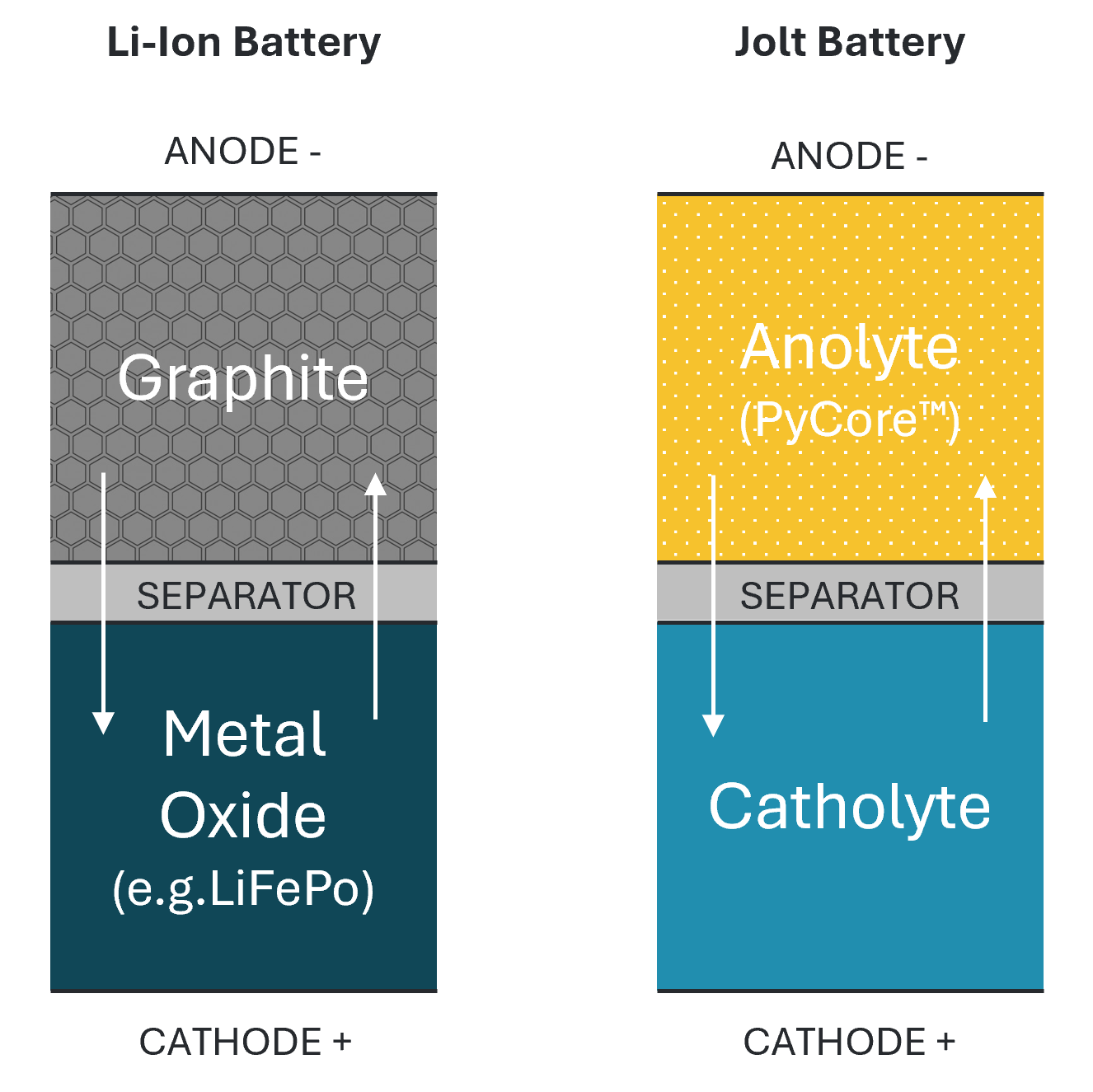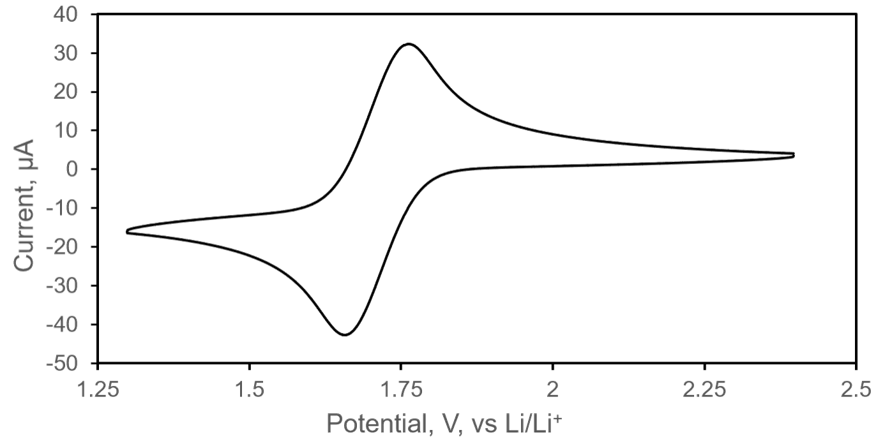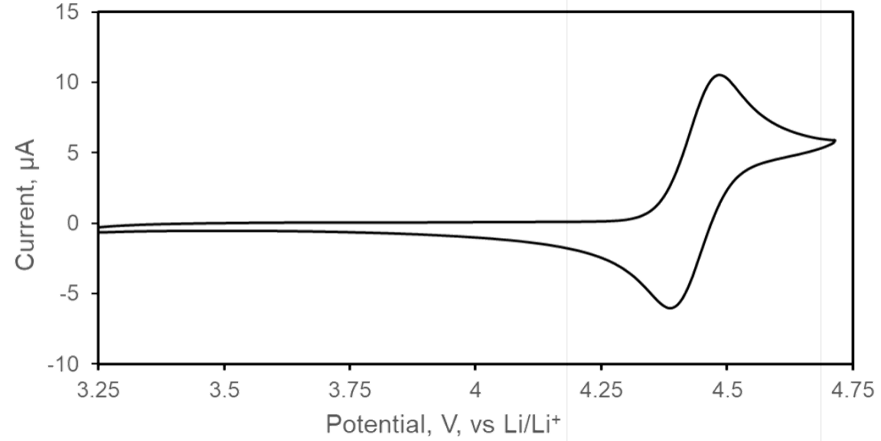Our Research Focus
Jolt is a materials research firm exploring the potential of new organic materials to solve critical energy infrastructure challenges.
Through our research, we’ve uncovered a new class of organic molecules including a robust anolyte material we’ve named PyCore™. We are continuing to explore and develop PyCore™, along with new catholyte compounds, as solutions for low-cost, high-performance, domestically-sourced energy storage materials.
As part of our research collaboration with the Michigan State University Bioeconomy Institute, we’re looking for a commercialization partner to help us jumpstart our use of organic compounds in advanced energy storage applications.

New Materials for a Familiar Battery Design
Our materials research does not require a redesign of basic anode-cathode battery structure nor does it require new manufacturing infrastructure. We are synthesizing materials that can replace complex, lithium or lead-based materials with all-organic compounds. This familiar design accelerates commercialization while eliminating dependence on scarce materials and fragile foreign supply chains.

Li-ion Battery vs. Jolt Battery

Anolyte (PyCore™)
Cyclic Voltammogram

Catholyte
Cyclic Voltammogram
Our Raw Building Blocks

Easy to Find
Easy to Recycle
Broad Applications for a New Class of Molecules
We are harnessing decades of chemical R&D experience from the digital display, pharmaceutical, and electrochromic worlds to craft a totally new battery. We have uncovered new possibilities for electrochemically active organic compounds, and the unique properties we’ve discovered suggest broad applications for mobility, consumer products, defense and more.
The journey to producing stable, high-performance compounds for energy applications requires specialized knowledge on how to stabilize certain molecules. Building on existing chemistry, Dr. Tom Guarr leveraged his expertise in organic materials to successfully develop new pyridinium compositions that offer exceptional electrochemical performance.
Our research has been published in leading scientific journals and recognized by major institutions:
| Recent Articles & Resource Links | Publication | Date |
|---|---|---|
| An Organic Battery to Power the Future | Open Access Gov | 2025 |
| No Lithium… The Organic Battery Revolution Begins | The European | 2025 |
| Renewable Fuel for a Generation of Green Batteries | Scientia | 2025 |
| CH-π Interactions in Organic Energy Storage | Nature Chemistry | 2023 |
| MSU Solar and Wind Efficiency Research | MSU Today | 2023 |

Using Machine Learning For Faster, Better Research
We’re continuing to develop an machine learning model to maximize efficiency and support our research into electrochemically active organic molecules.
Called Advanced Molecular Property Predictor (AMP²), this trained program has already substantially sped up the discovery process of the 50+ pyridiniums we’ve created.
Our Patents
| Reference No. | Serial No. / Filing Date | Patent Grant No. / Issue Date | Country | Status |
|---|---|---|---|---|
| PCT/US2015/040970 | 15/327,197 01/18/2017 |
10,249,910 04/02/2019 |
US, China, Germany, Japan, Korea | Issued |
| PCT/US2017/062698 | 16/462,419 05/20/2019 |
11,094,964 08/17/2021 |
US, Australia, Japan | Issued |
| PCT/US2018/043048 | 16/628,496 01/03/2020 |
11,545,691 01/03/2023 |
US, Japan, Germany, Australia | Issued |
| US Provisional 63/280,344 |
18/708,156 05/07/2024 |
US, Australia. Japan, Europe | Filed | |
| US Provisional 63/565,565 |
63/565,565 03/15/2024 |
US | Filed |